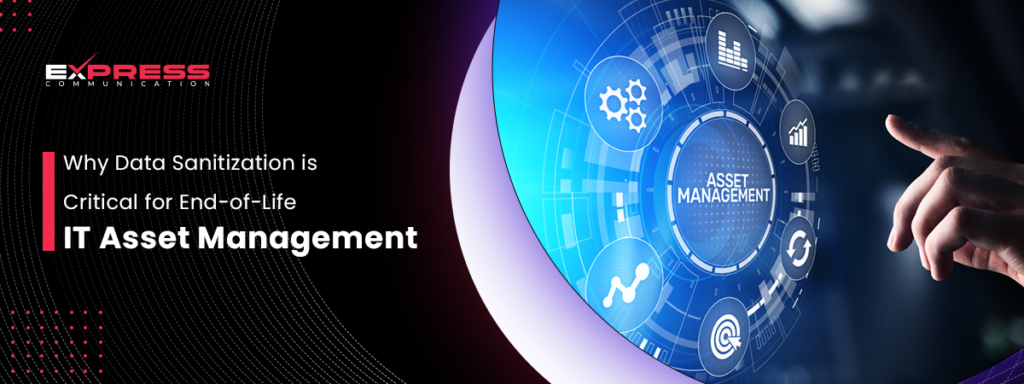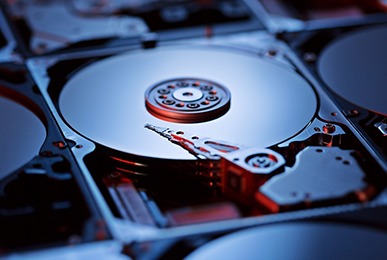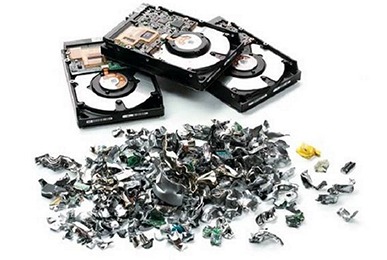
Have you ever wondered what happens to your old computer or smartphone when you get a new one? It’s not just about getting rid of it or recycling the parts; there’s a lot more at stake, especially when it comes to the data stored on those devices. This brings us to a crucial process known as data sanitization.
Table of Contents
What is Data Sanitization?
Data sanitization is the process of permanently and securely removing data from a device. This means that the data cannot be recovered or reconstructed by any means. It’s like erasing a chalkboard so thoroughly that no one can ever see what was written there before.
When a device reaches the end of its life, whether it’s a computer, smartphone, or any other IT asset, it likely contains sensitive information. This could include personal data, financial information, business secrets, and more. If this data isn’t properly sanitized, it could fall into the wrong hands, leading to identity theft, financial loss, or corporate espionage.
The Importance of Data Sanitization
Protecting Sensitive Information
The most obvious reason why data sanitization is critical is to protect sensitive information. Think about the kinds of data stored on your devices: personal photos, emails, banking details, business documents, etc. If someone were to recover this information after you’ve discarded your device, the consequences could be disastrous.
Compliance with Regulations
Many industries are subject to strict regulations regarding data privacy and protection. For example, healthcare providers must comply with HIPAA (Health Insurance Portability and Accountability Act) in the United States, which mandates the protection of patient information. Similarly, businesses in the European Union must adhere to GDPR (General Data Protection Regulation). Failure to comply with these regulations can result in hefty fines
Preventing Data Breaches
Data breaches are a major concern for organizations of all sizes. A breach can occur if old devices are not properly sanitized before disposal. Cybercriminals can recover data from these devices and use it for malicious purposes. You can prevent such breaches and protect your organization’s reputation by thoroughly sanitizing data.
Environmental Responsibility
Properly managing end-of-life IT assets is not just about data protection; it’s also about environmental responsibility. When devices are recycled or repurposed without proper data sanitization, the risk of data exposure remains. On the other hand, secure data sanitization followed by environmentally responsible recycling ensures that data is protected and electronic waste is minimized.
Methods of Data Sanitization
There are several methods for data sanitization, each with its own level of effectiveness and applicability.
Physical Destruction
Physical destruction involves physically damaging the device so that it can no longer be used or accessed. This could mean shredding, crushing, or incinerating the device. While this method is highly effective in ensuring data is irrecoverable, it also means the device can’t be reused or recycled for parts.
Data Wiping
Data wiping involves using software to overwrite existing data on the device. This method allows the device to be reused or recycled after the data has been securely removed. Software tools used for data wiping ensure that the data is overwritten multiple times, making it nearly impossible to recover.
Degaussing
Degaussing is a method used primarily for magnetic storage devices like hard drives and tapes. It involves exposing the device to a strong magnetic field, which disrupts the magnetic domains where data is stored, effectively erasing the data. This method is effective but also renders the device unusable afterward.
Encryption and Key Destruction
Another method involves encrypting data and then destroying the encryption keys. This means that even if the data is still present on the device, it cannot be read without the encryption key. This method is useful for devices that will continue to be used but need to ensure data security.
Steps to Implement Data Sanitization
Implementing data sanitization as part of your end-of-life IT asset management requires a systematic approach.
Identify the Devices
The first step is to identify which devices need data sanitization. This includes not just computers and smartphones, but also servers, storage devices, and any other IT equipment that stores data.
Choose the Appropriate Method
Depending on the type of device and the sensitivity of the data, choose the most appropriate method of data sanitization. For instance, highly sensitive data might require physical destruction, while less sensitive data could be securely wiped.
Use Trusted & Demanding Services
If you’re not equipped to perform data sanitization in-house, consider using trusted services. These services have the expertise and tools to ensure that data is securely and thoroughly removed from your devices.
Document the Process
For compliance and audit purposes, it’s important to document the data sanitization process. This includes details about the devices, the method used, and any certificates of destruction or reports provided by the service provider.
Verify the Results
Finally, verify that the data has been successfully sanitized. This can involve testing a sample of devices to ensure that no data can be recovered.
Benefits of Proper Data Sanitization
Peace of Mind
Knowing that your data has been securely erased provides peace of mind. You don’t have to worry about sensitive information falling into the wrong hands.
Legal and Regulatory Compliance
Proper data sanitization helps ensure compliance with various legal and regulatory requirements. This can protect your organization from fines, legal action, and damage to your reputation.
Cost Savings
While there is a cost associated with data sanitization, it can save money in the long run by preventing data breaches and the associated costs. It also allows for the safe recycling or resale of IT assets, potentially recouping some of the initial investment.
Environmental Protection
By ensuring that data is sanitized before devices are recycled, you contribute to environmental protection. This helps reduce electronic waste and supports the responsible recycling of IT assets.
Common Myths About Data Sanitization
Myth: Deleting Files is Enough
Many people believe that simply deleting files from a device is sufficient to remove the data. However, deleted files can often be easily recovered with the right tools. Proper data sanitization goes beyond simple deletion to ensure that data cannot be recovered.
Myth: Only Large Organizations Need Data Sanitization
While large organizations do have a greater volume of data to manage, small and medium-sized businesses also need to practice data sanitization. Every organization, regardless of size, handles sensitive information that needs to be protected.
Myth: Data Sanitization is Too Expensive
The cost of data sanitization is often seen as a barrier, but the cost of a data breach can be much higher. Investing in proper data sanitization can prevent costly breaches and the associated fallout.
Myth: Old Devices are Not a Risk
Even old devices that seem obsolete can contain valuable data. Cybercriminals are often able to recover data from seemingly useless devices. Proper data sanitization ensures that all data is securely erased, regardless of the device’s age.
Conclusion
Data sanitization is a critical aspect of end-of-life IT asset management. It protects sensitive information, ensures compliance with regulations, prevents data breaches, and supports environmental responsibility. By understanding the importance of data sanitization and implementing the right methods, organizations can securely and responsibly manage their IT assets.
Whether you’re a small business or a large corporation, data sanitization should be a key part of your IT asset management strategy. Don’t wait until it’s too late; start implementing data sanitization practices today to protect your data and your organization.





